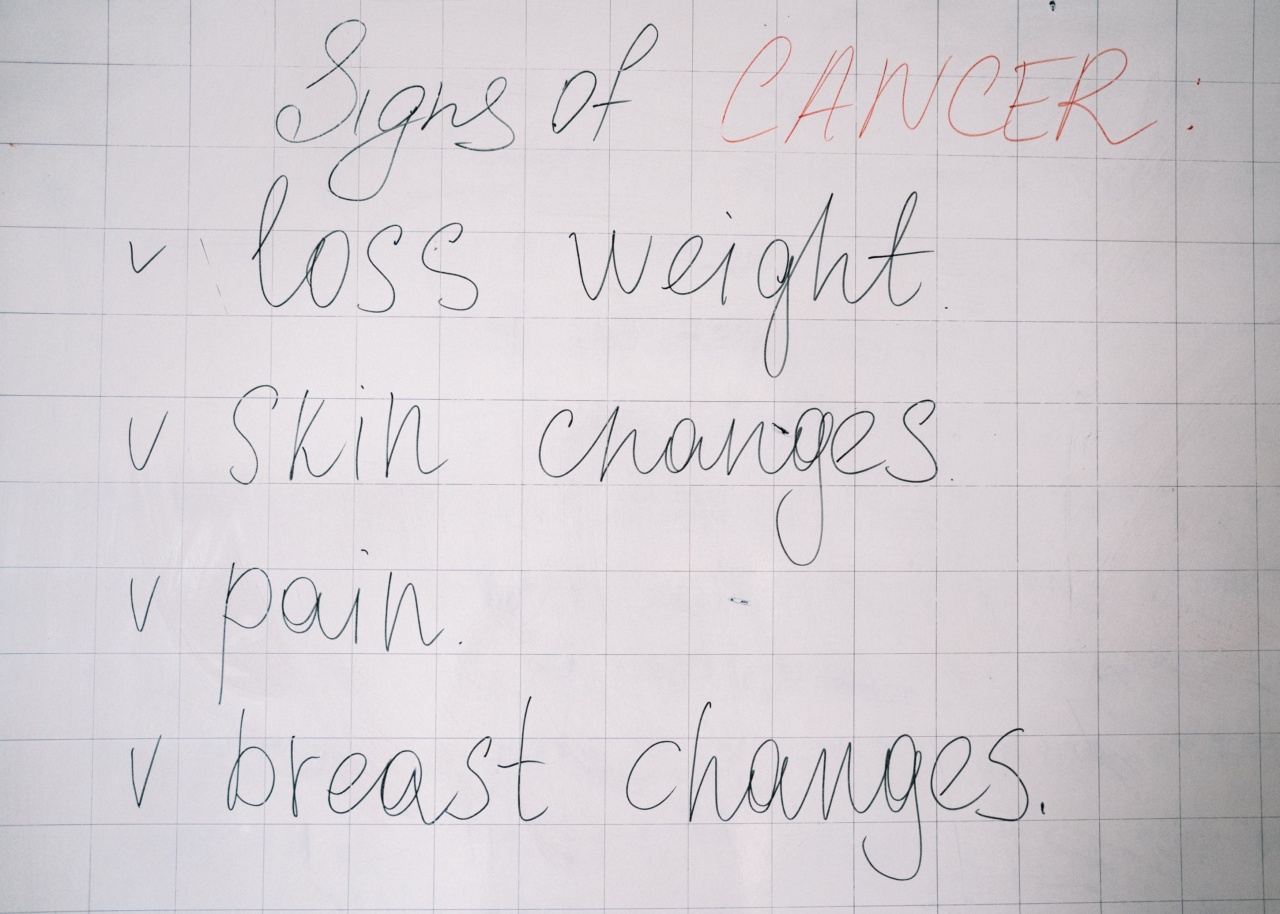Insulin is a hormone produced by the pancreas that helps regulate blood sugar levels in the body. Insulin resistance is a condition where the body becomes less responsive to insulin and is unable to effectively use glucose for energy.
This can lead to high blood sugar levels and type 2 diabetes if left untreated. Here are some common symptoms and warning signs of insulin resistance:.
1. Increased Hunger and Cravings
One of the earliest signs of insulin resistance is increased hunger and cravings, especially for sugary and high-carbohydrate foods.
This happens because insulin resistance prevents glucose from entering cells, causing the body to feel like it is starving even though there is plenty of glucose in the blood. Over time, this can lead to weight gain and obesity.
2. Fatigue and Low Energy
Insulin resistance can also cause feelings of fatigue and low energy throughout the day. This happens because the body is unable to efficiently use glucose for energy, leading to a buildup of glucose in the blood.
This can make it difficult for the body to function properly, resulting in feelings of fatigue and tiredness.
3. Increased Thirst and Urination
Insulin resistance can cause increased thirst and urination as the body tries to flush out excess glucose from the blood.
This happens because the body is unable to effectively use insulin to regulate blood sugar levels, leading to higher than normal blood sugar levels and dehydration.
4. Slow Wound Healing
Insulin resistance can also slow down the body’s ability to heal wounds and fight infections.
This happens because high blood sugar levels can damage blood vessels, leading to poor circulation and reduced oxygen and nutrient delivery to the affected area. This can make it more difficult for the body to repair and heal itself.
5. Tingling and Numbness
Insulin resistance can cause tingling and numbness in the hands and feet, a condition known as neuropathy. This happens because high blood sugar levels can damage nerves in the body, leading to reduced sensation and function.
This can make it more difficult for the body to perceive and respond to pain and other sensations.
6. High Blood Pressure
Insulin resistance can also lead to high blood pressure as the body tries to compensate for reduced insulin sensitivity.
This happens because the body may produce more insulin to try and regulate blood sugar levels, which can lead to vasoconstriction and increased blood pressure.
7. High Cholesterol and Triglycerides
Insulin resistance can also lead to high cholesterol and triglyceride levels in the blood.
This happens because insulin resistance can reduce the body’s ability to break down and metabolize fats, leading to increased levels of cholesterol and triglycerides in the blood. Over time, this can increase the risk of heart disease and stroke.
8. Polycystic Ovary Syndrome (PCOS)
Insulin resistance is strongly linked to polycystic ovary syndrome (PCOS), a common hormonal disorder in women that can cause infertility, irregular periods, and other health problems.
This happens because high insulin levels can disrupt the normal function of the ovaries, leading to reduced fertility and other complications.
9. Acanthosis Nigricans
Acanthosis nigricans is a skin condition characterized by dark patches of skin on the neck, armpits, and other areas of the body. This condition is strongly associated with insulin resistance and can serve as an early warning sign of the condition.
10. Type 2 Diabetes
If left untreated, insulin resistance can progress to type 2 diabetes, a chronic condition characterized by high blood sugar levels and other health problems.
This happens because the body is unable to effectively use insulin to regulate blood sugar levels, leading to ongoing high blood sugar levels and a variety of complications over time.





























